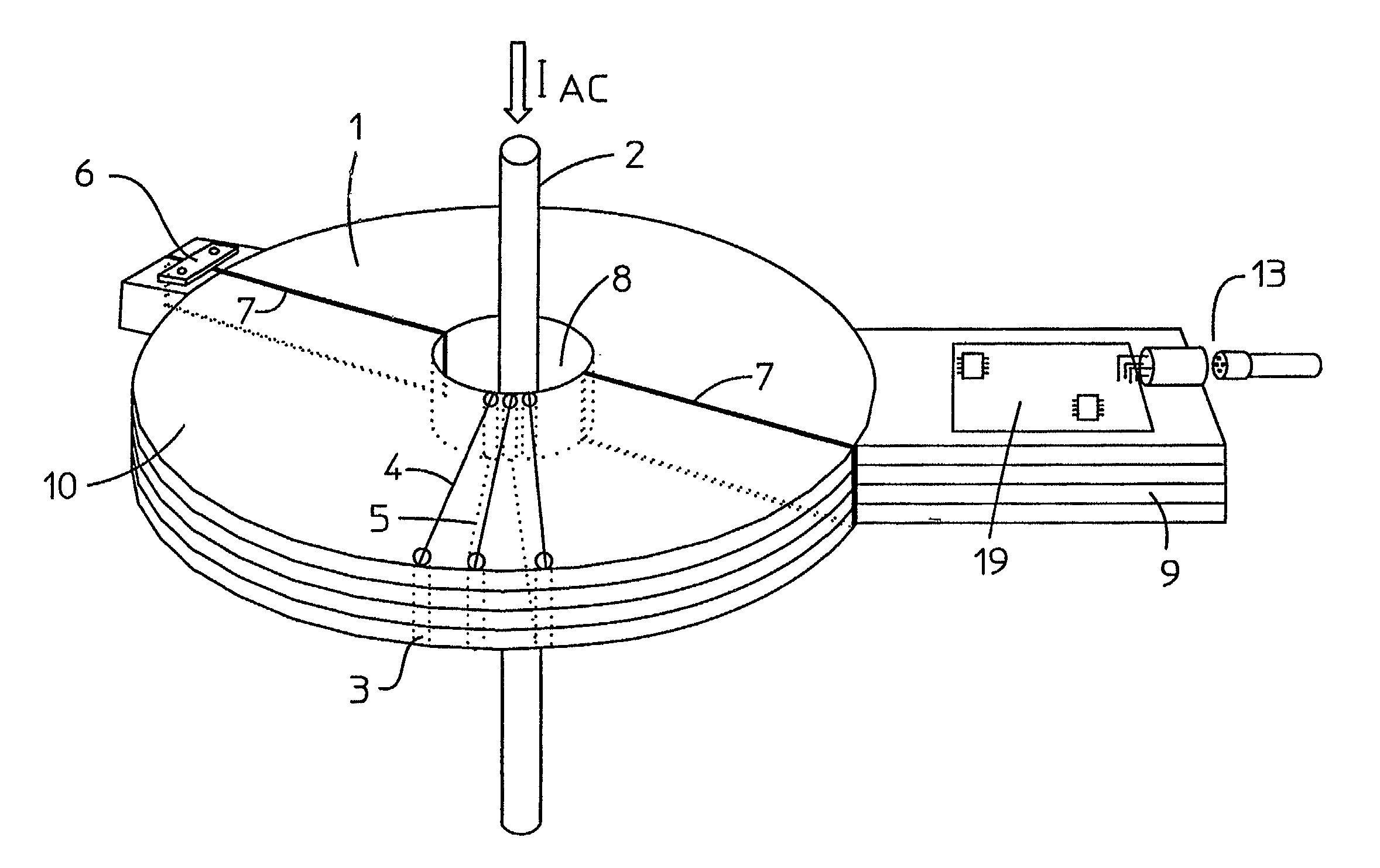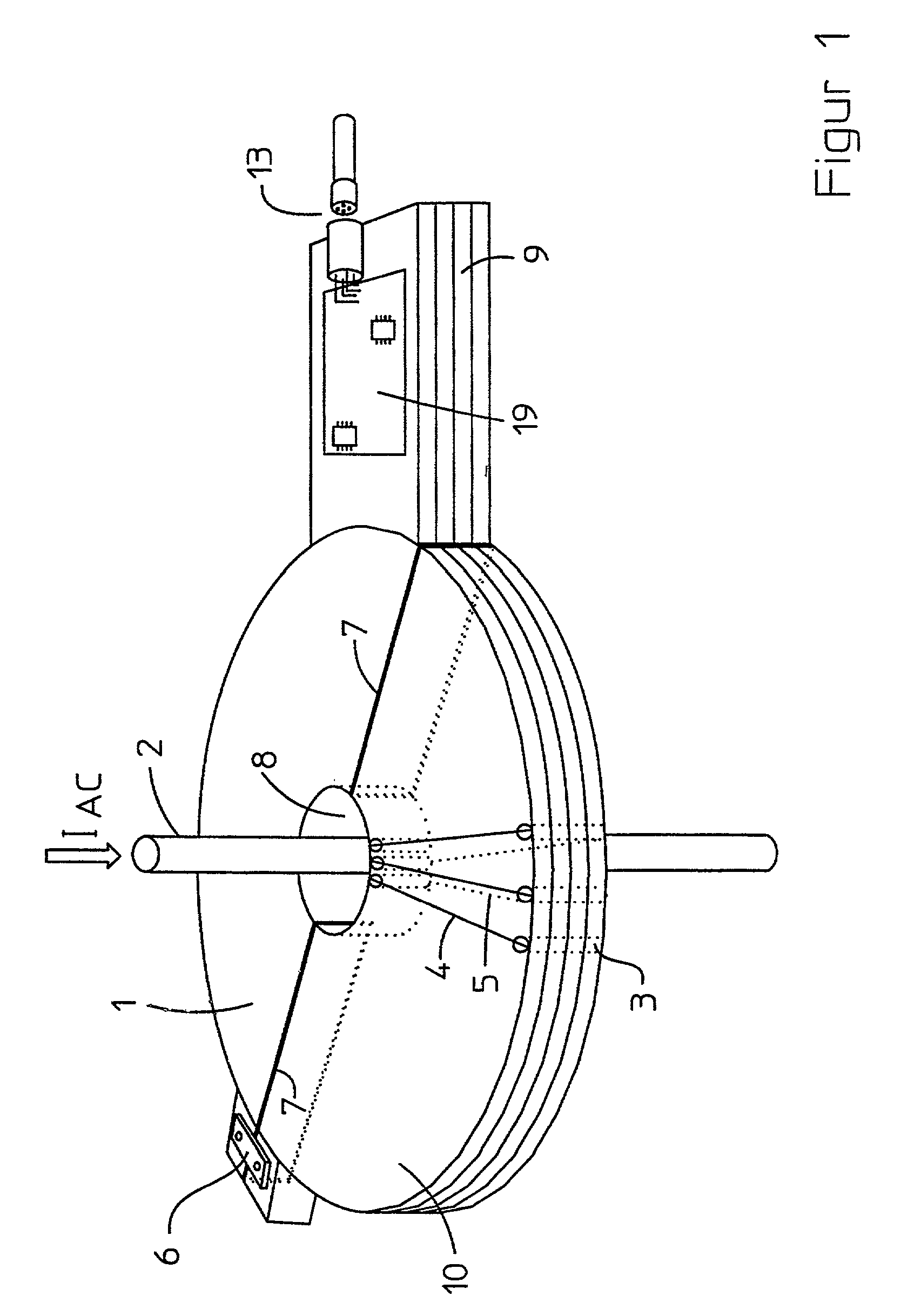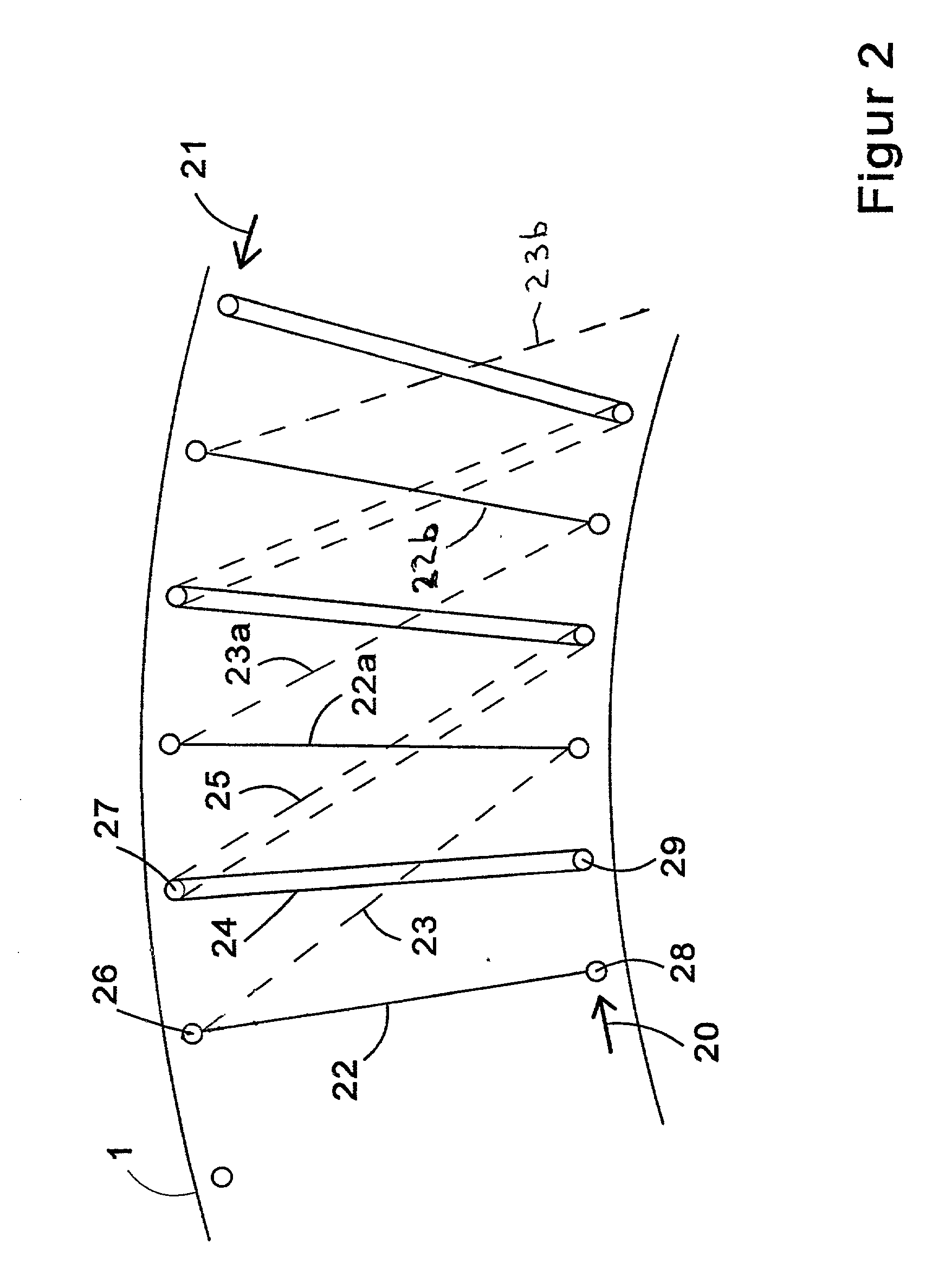Printed circuit board-based current sensor
a current sensor and printed circuit board technology, applied in the direction of instruments, measurement devices, basic electric elements, etc., can solve the problems of high space requirement, high cost of manufacturing the device as a whole, and numerous different steps of production
- Summary
- Abstract
- Description
- Claims
- Application Information
AI Technical Summary
Benefits of technology
Problems solved by technology
Method used
Image
Examples
Embodiment Construction
[0014] FIG. 1 shows the arrangement according to the invention of a current sensor with a flip-open, annular printed circuit board as the current acquisition coil. The hinge 6 provides a flip-open link between the one printed circuit board half 1 and the second printed circuit board half 10. The current-carrying conductor 2 with its current to be measured is axially oriented and routed through the middle of the current acquisition coil. The printed conductors of the individual layers are not shown, but alluded to with 4 and 5. The additional part of the printed circuit board 9 is preferably used to hold electric or electronic components for an evaluation circuit 19, which issues a scaled measuring signal to the output 13.
[0015] FIG. 2 shows the arrangement of printed conductors for generating a current acquisition coil. In this case, the printed conductors 22, 22a, 22b of the winding and the corresponding additional printed conductors on the top of the incoming coil winding 20 are o...
PUM
| Property | Measurement | Unit |
|---|---|---|
| flexible | aaaaa | aaaaa |
| structure | aaaaa | aaaaa |
| AC currents | aaaaa | aaaaa |
Abstract
Description
Claims
Application Information
 Login to View More
Login to View More - R&D
- Intellectual Property
- Life Sciences
- Materials
- Tech Scout
- Unparalleled Data Quality
- Higher Quality Content
- 60% Fewer Hallucinations
Browse by: Latest US Patents, China's latest patents, Technical Efficacy Thesaurus, Application Domain, Technology Topic, Popular Technical Reports.
© 2025 PatSnap. All rights reserved.Legal|Privacy policy|Modern Slavery Act Transparency Statement|Sitemap|About US| Contact US: help@patsnap.com



